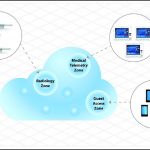November 2015 //
 The healthcare industry has rapidly been evolving to a digital model. Hospitals and other caregiving facilities are under tremendous pressure to lower costs but are also required to maintain or even improve the quality of patient care. However, the legacy processes in most healthcare institutions were put in place decades ago, and they are slow and error prone.
The healthcare industry has rapidly been evolving to a digital model. Hospitals and other caregiving facilities are under tremendous pressure to lower costs but are also required to maintain or even improve the quality of patient care. However, the legacy processes in most healthcare institutions were put in place decades ago, and they are slow and error prone.
For example, consider the way nurses and other clinicians respond to alarms on equipment that is monitoring a patient. Typically, an event will trigger an audible alarm. Someone needs to hear the alarm and locate a nurse or other responsible caregiver who can then check the patient and take action, if necessary. This is a highly inefficient process, as nurses often are in charge of multiple patients and can’t always hear an alarm—meaning an alarm can sound for several minutes or even longer before anyone is notified.